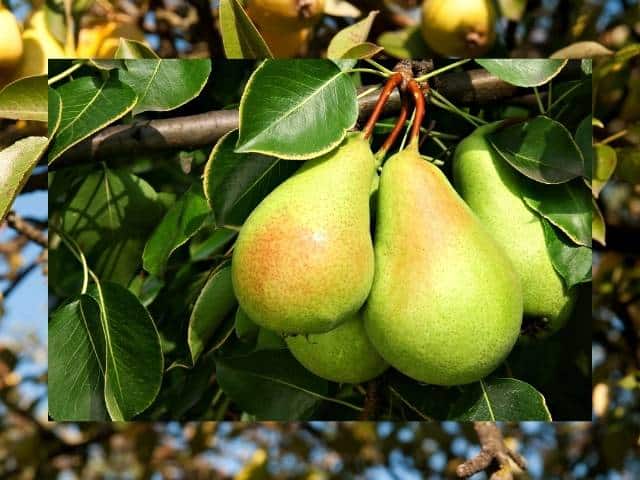As a gardener, I often get asked whether pear trees lose their leaves. The short answer is yes, pear trees do shed their leaves annually. However, there’s more to understand about the natural leaf loss process in pear trees.
Pear Trees Are Deciduous
Pear trees are deciduous, meaning they lose all their leaves each year. This is an adaptive trait that helps pear trees survive cold winters. When fall approaches, pear trees stop producing chlorophyll in their leaves. This causes the green color to fade, revealing hues of yellow, orange, red, and brown. The colors look gorgeous, but they also signal that the leaves are shutting down photosynthesis and preparing to detach from the tree. Shedding leaves allows pear trees to conserve energy and minimize damage from freezing temperatures, high winds, and snow loads during winter dormancy.
Come spring, as temperatures warm, pear trees begin regenerating leaves. They rely on stored energy reserves from the roots to push out new growth. This ability to drop leaves in winter and regrow them in spring is part of the natural cycle that deciduous pear trees are wired for.
When Do Pear Trees Lose Their Leaves?
The exact timing of leaf drop varies depending on climate variety and weather patterns each year. But generally, pear trees start losing their leaves in fall around the first frost. Leaf fall accelerates with colder weather and shorter daylight hours. Most pear tree varieties native to North America lose all their foliage by late November or early December.
Pear trees in warmer regions may hold onto their leaves later into winter And ornamental flowering pear tree varieties like the Bradford pear begin shedding leaves much earlier in fall than edible fruiting pear trees Bradford pears and other ornamental pears often start dropping leaves in late September or October,
The key point is that pear trees evolved to lose their leaves annually in response to seasonal cues like cooling temperatures and diminishing light. As long as the defoliation happens during the natural winter timeline, it’s nothing to worry about.
Premature Leaf Drop Is a Warning Sign
While winter leaf loss is normal, premature or excessive leaf drop during spring or summer is not. Pear trees that are shedding leaves too early or too heavily outside of fall likely have an underlying issue. Here are some potential causes of abnormal leaf loss to look out for:
-
Environmental stress – Heat, drought, overwatering, extreme weather events, poor drainage, or compacted roots can all push pear trees to drop leaves prematurely.
-
Pests – Sap-sucking bugs like pear psylla can diminish leaf health and cause leaf loss. Chewing pests like caterpillars also damage foliage.
-
Diseases – Bacterial and fungal diseases impair the leaves’ ability to function, eventually killing them. Common pear tree diseases linked to defoliation include fire blight, leaf spot, and powdery mildew.
-
Nutrient deficiencies – Lack of nitrogen, phosphorus, potassium, or other essential nutrients leads to poor leaf health and shedding.
-
Root damage – Girdling roots or root rot limit water and nutrient uptake, eventually starving the leaves.
When troubleshooting unexpected pear tree leaf loss, start by inspecting the foliage and branches for signs of pests or disease infection. Check soil moisture and drainage. Assess for adequate sunlight exposure and fertilization too. Identify and mitigate any underlying issues to help get your tree back on track.
Do Pear Trees Grow Leaves Again After Winter?
Pear trees are resilient and programmed to releaf each spring. As temperatures climb and days lengthen, dormant buds on the branches swell and burst open. The young developing leaves emerge pale green initially but darken as they mature. Expanding leaf cover signals the pear tree is restarting photosynthesis and growth for a new growing season.
Even dieback of small branches and twigs due to winter damage will often regenerate new growth come spring. As long as the main scaffold branches and trunk wood remains alive through winter, most pear trees leaf out reliably every spring.
However, certain scenarios can interfere with releafing:
-
Dead wood – If all the buds and branch tips are dead, new leaves can’t form. This indicates deeper injury like freeze damage or disease.
-
Weakened roots – Poor root health from overwatering, girdling roots, or root rot inhibits energy supply for new growth.
-
Chronic stressors – Ongoing issues like nutrient deficiency, drought, shade, or severe pest infestation suppress leaf development.
-
Old age – Eventually all pear trees decline with age and may stop refoliating properly.
If your pear tree fails to regrow leaves by early summer, it’s likely in decline. Have an arborist inspect it ASAP and try to remedy underlying causes to restore vigor.
Fire Blight in Pear Trees Treatment
FAQ
Why are the leaves falling off my pear tree?
Do pear trees go dormant in winter?
Why are my pear tree leaves curling and turning brown?
Do evergreen pear trees lose their leaves?
- A Complete Guide to Caring for Yuki Cherry Blossom Shrub - January 23, 2025
- Identifying Red Hot Poker Seeds: What to Look For When Harvesting Torch Lily Pods - January 23, 2025
- A Complete Guide to Harvesting Evening Primrose Seeds - January 23, 2025

